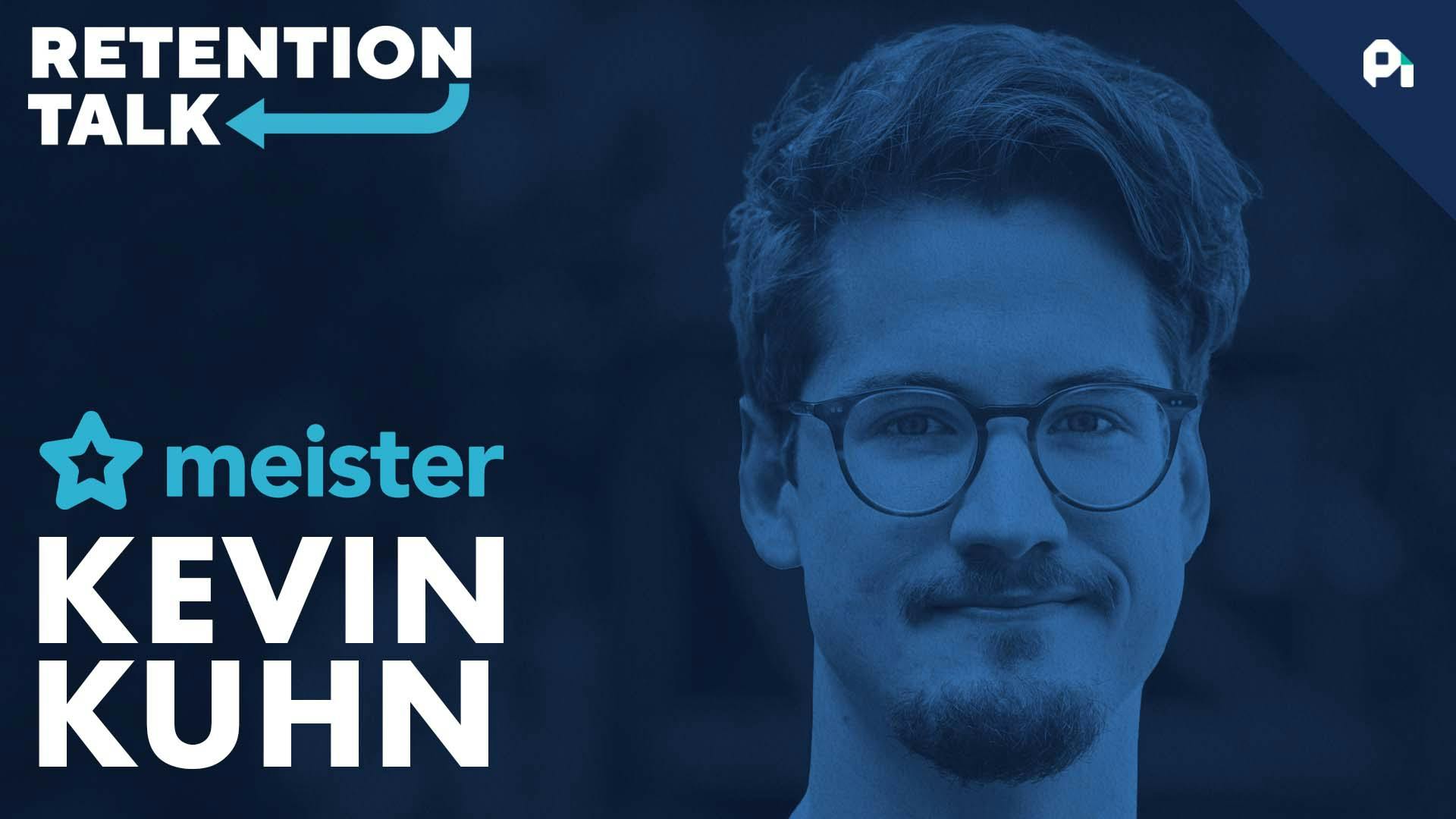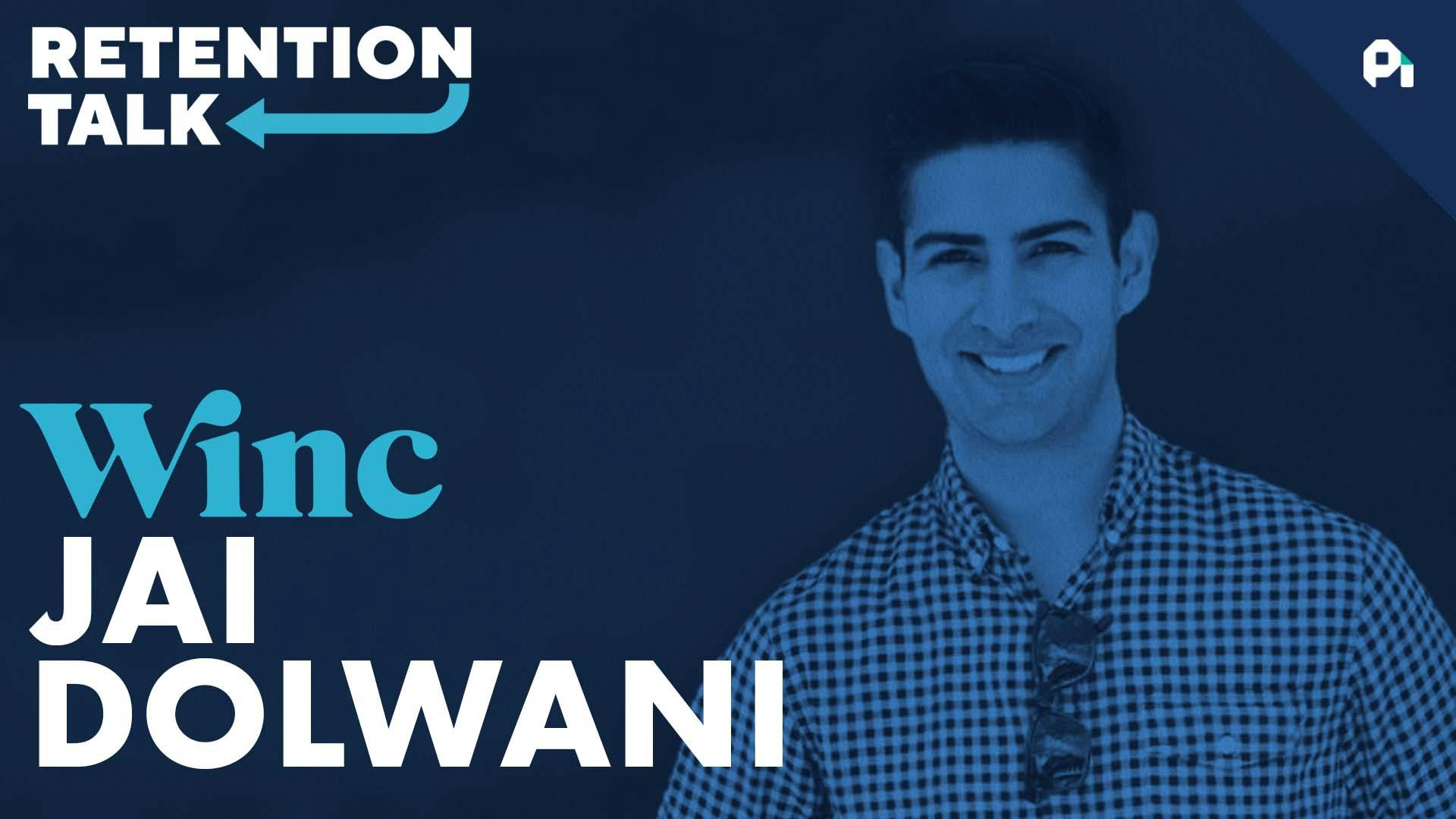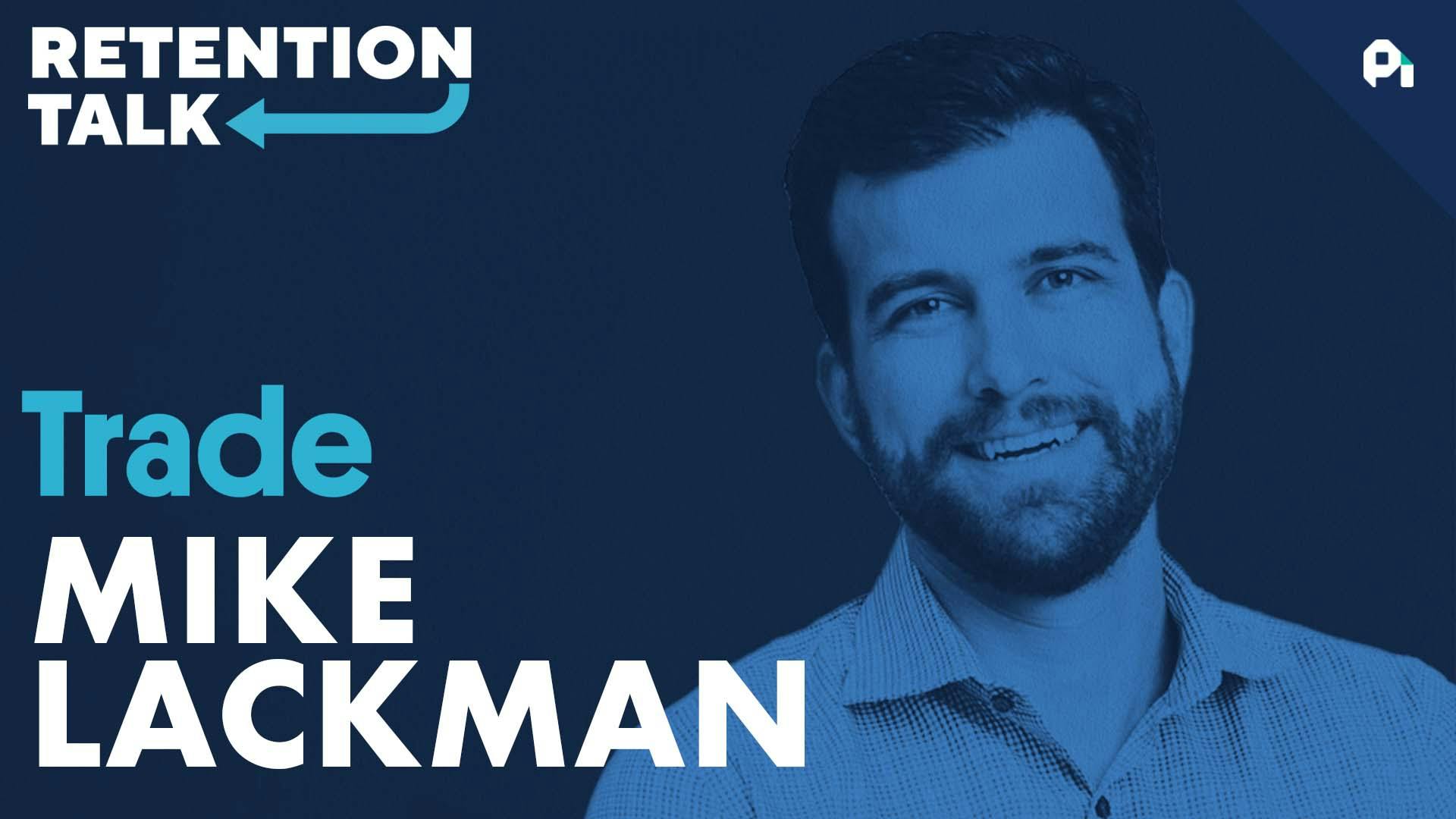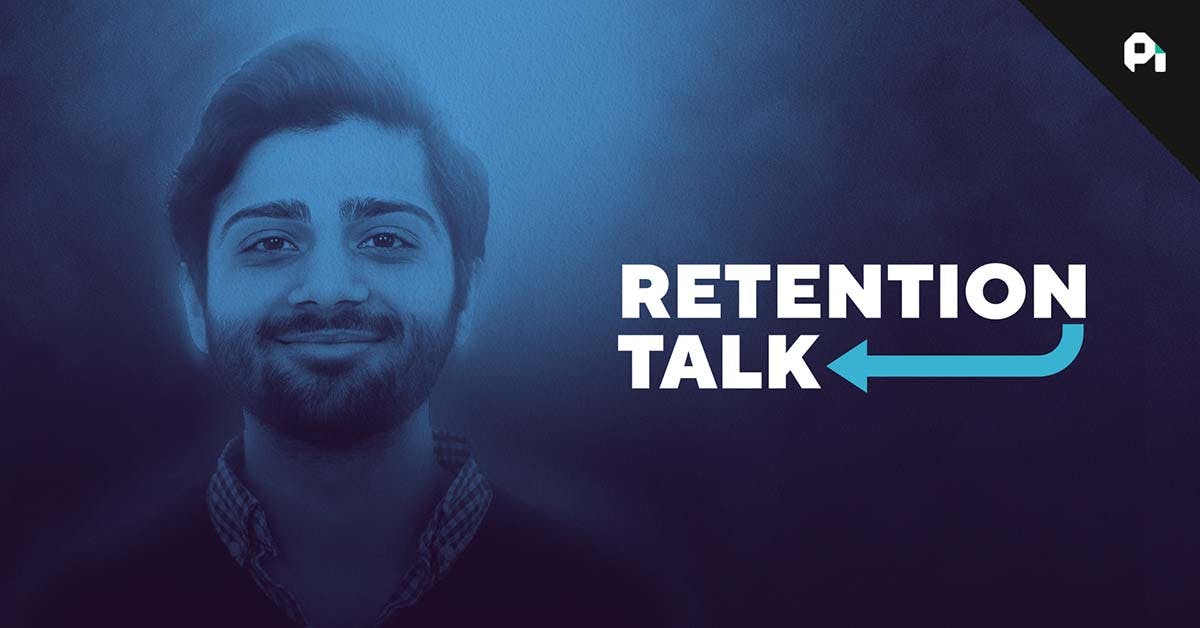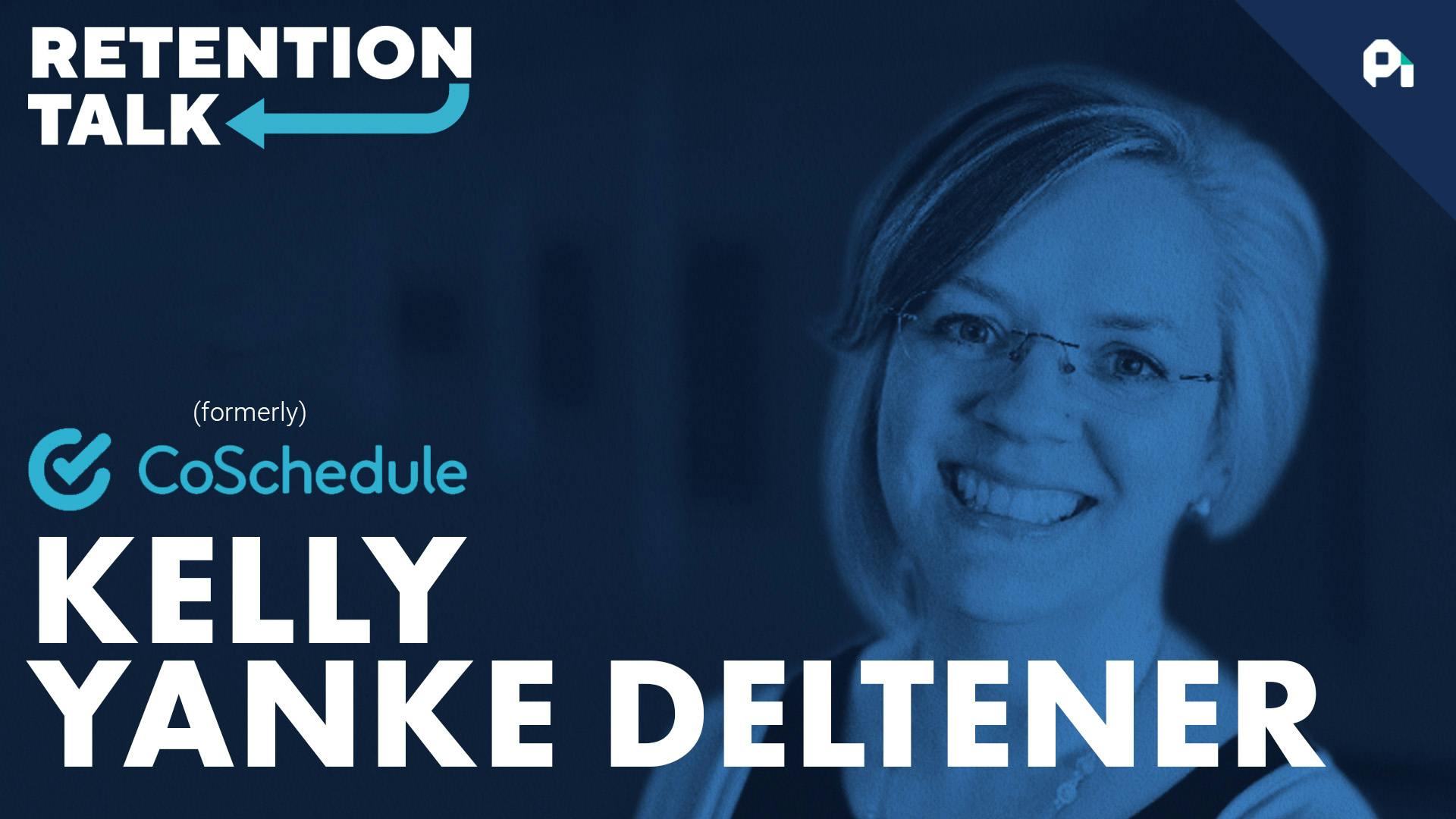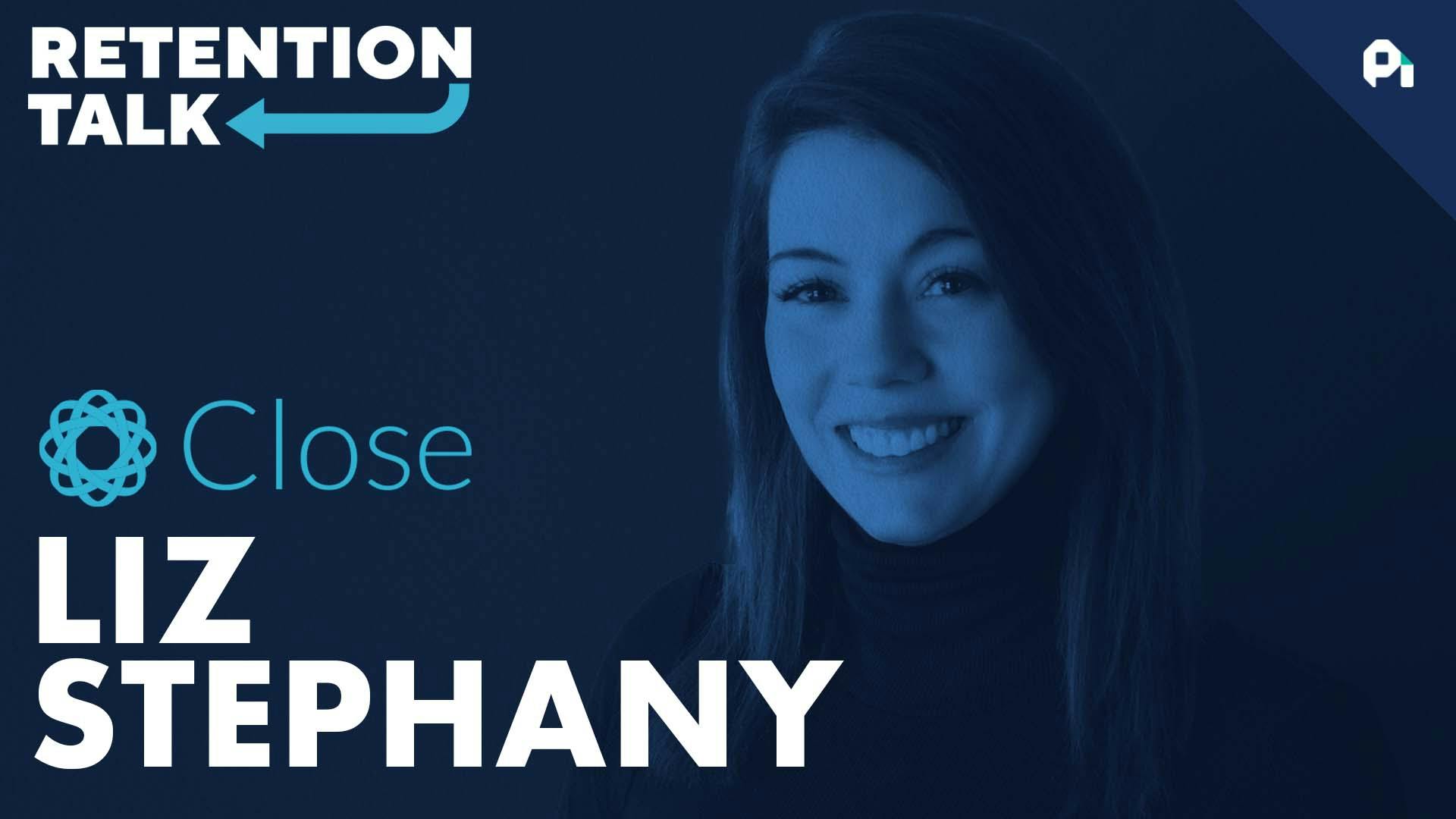
Knowing when the customer journey is over | Supercast's Jason Sew Hoy
This episode might reference ProfitWell and ProfitWell Recur, which following the acquisition by Paddle is now Paddle Studios. Some information may be out of date.
Please message us at studios@paddle.com if you have any questions or comments!
How do you know when a customer's journey is finished? It's going to vary for everyone. However, if you look at it the right way there are repeatable patterns that will help guide you.
On today's episode of Retention Talk, I speak with Jason Sew Hoy, Co-Founder and CEO at Supercast. We talk about going where your customers already are, making cancellation reasons easily accessible to the team, and understanding the customer journey.
Key points discussed in the episode
Maybe customers are not dissatisfied. Maybe it's just that the service has done what it was supposed to do. They've used it to the point where they've got the outcome that they were expecting. It's actually a success.” –Jason Sew Choy
Going where your customers already are
Supercast has a philosophy to not try to take listeners away from the platforms they are familiar with. They're able to cut down the number of steps for fans to support their favorite podcast, enabling Supercast to have an advantage in keeping folks around due to the inherent value of being easy to get to.
Making cancellation reasons easily accessible to the team
At Supercast, they feed all reasons for cancellation into one slack channel. This way as Jason says, he can check in periodically to determine if there is a trend or just bad luck.
Understanding the customer journey
Not all cancellations are due to a bad impression. For business models like podcasting, there is an extent to customer satisfaction. The reason they may be discontinuing your service is because customers have used it to the outcome that they were expecting.
Take Action:
Customer success needs to be a company-wide priority for SaaS and subscription companies. The customer relationship is at the core of your recurring revenue, and everything you do to cement those relationships has a net positive impact on your bottom line. Building your customer success strategy is all about focusing on those relationships.
Here are 7 steps for creating your customer success strategy:
1. Identify target personas
You won’t know how to provide the best possible experience if you don’t understand your target customer. Buyer personas help you qualify the best-fit customers for your product and figure out how to attract them to your service. It’s impossible to make someone successful if you don’t understand their goals.
2. Talk to current customers
Your current customers are some of the most valuable assets you have. They can provide you with real-time customer feedback on your product, its value, and how it helps them be successful. Talking to current customers is also a great way to find social proof to share with prospects and leads to help them convert.
Try using chat pop-ups, automated email campaigns, and proactive outreach to survey your current customer base about their needs.
3. Map out multiple customer journeys
Each target persona should have its own customer journey. Once you understand who your customers are, who you want to attract, and how to convert them, it’s time to map out the journey that gets them there. Build this journey based on customer feedback as well as the goals of each customer.
Start small. If you understand the basic journey a customer follows from discovering your product to purchasing it, to finally becoming a loyal user, that will help you build a better experience as a whole.
4. Optimize your onboarding journey
Getting used to a new product or service is never easy. Make sure your onboarding journey is optimized to provide the most value possible at each customer touchpoint. Use the customer surveys and conversations you’ve had to figure out where to focus. The easier it is to get acclimated to a new tool, the better off customers will be in the long term.
5. Define what success looks like for each persona
What actions does a new customer need to take in order to achieve their goals using your service? Make sure you define exactly what outcomes are beneficial for each target persona, and then incorporate them into your customer success strategy. Learn more about building holistic personas in this post about customer research.
6. Pick metrics that reflect those outcomes
How do you quantify a customer’s success? It’s important to nail down the metrics you need to use to map out exactly how much customer success impacts your bottom line. Whether it’s retention and churn rates, new MRR, or LTV—make sure you can analyze the success of your strategy effectively.
If you’re not sure which metrics make the most sense, track how they each change as you implement your customer success strategy. Sometimes making an impact on your onboarding series will help you increase LTV, sometimes it will cut down on churn rates.
7. Use customer success software to augment your strategy
There are a number of different tools you can use to facilitate customer success. Here are a few to help you get started with your search:
- Intercom: Their platform provides live customer chat, so you can connect with customers as they use your product/service.
- Zendesk: An all-in-one suite for customer management, customer service, and sales.
- Gainsight: This tool helps you track success metrics (like churn rate and LTV) to see whether your customer success strategy is working.
These are just a few platforms that can help you measure the impact of your customer strategy. Find the tools that provide you with the most value and meet your unique business’ needs.
Do us a favor?
Part of the way we measure success is by seeing if our content is shareable. If you got value from this episode and write up, we'd appreciate a share on Twitter or LinkedIn.
Any business ultimately, you know, starts with the customer. You know, if you come from kind of like the product world, then of course, you know, like there's been plenty written, you know, and most methodologies about, you know, kind of starting with a customer walking through things with the customer understanding, you know, kind of what the customer was
expecting, whether they get that and then, you know, like what happens after that? I think all of those principles ultimately also apply to what happens when they are satisfied with the service. Or maybe they're not dissatisfied. Maybe it's just that the service has done what it was supposed to do.
They've used it to the point where they've kind of got the outcome that they were expecting. It's actually a success. Welcome to retention talk. I'm Neil Dhesi, and we're talking to the best minds in the world of product and customer success.
They bring you actionable strategies on reducing churn and boosting retention. This week, we're talking to Jason, co-founder and CEO at Super Cast. In this episode, we talk about going away. Your customers already are making cancelation reasons easily accessible to the entire team and pay careful attention to what Jason says about the entire customer journey.
Jason, thank you so much for being here with us today. I'm super excited to learn, you know, a little bit more about the things that you guys are doing over our super cast and specifically how you guys think of our retention in a very interesting space.
So first up, you know, would love a little bit of background on like, how'd you end up starting supercars? What's the mission? And sort of like, what's what's the focus for you, at least at this stage of the company right now?
Yeah. So Supercars is a membership platform built primarily for podcasters and audio creators. And the way I got started was we just started working with podcasters, primarily on an agency basis. My co-founder, Andrew Wilkinson, owns a family of companies up in Canada called Tony Scott, working with Sam Harris on how he could better monetize his popular podcast
. And he, you know, didn't want to do advertising. He tried out Patreon, and it wasn't a good fit for him, and so we wanted to build his own subscription monetization solution. And so that's what Tony got started doing on an agency basis to begin with.
And as a result of building that platform for Sam obviously got a look at the numbers. And when he rolled that out, you know, we were all just blown away by the fact that he could generate five, you know, like six figures per month, you know, and with metrics that looked very much like a software business for
what was a podcast, you know, and that was, you know, kind of an enormous revelation. You know, the thought was just, you know, how many other podcasts are there out there that have these highly engaged audiences, but that just don't have the monetization tools to be able to effectively monetize the top end of their engaged audience?
And so we repeated the experiment with a couple of other podcasts as hyper focused cases Peter Atiya and the health space Rhonda Patrick also in the health and longevity space. And then, you know, a small network up in Canada called Canada Land, which had six shows.
They tried it with one and then, you know, eventually moved it across all six of the super customer. But a bundle together access to all of their shows, you know, for one subscription price. And so, you know, essentially buoyed by the success of that, you know, like we have now decided we've got to take this model to
the podcasting world via, you know, this again, this so many audiences out there where podcasts have done the hard work, you know, as a podcast yourself, are you getting the show off the ground? You've got to fight tooth and nail for every listener.
And then, you know, once you get to a point where you're looking to monetize and you've built that audience right now, most people only know ads, and they only know sponsorships as a way to monetize that, which is great.
It gives you a foundation, but it's a broad brush and it treats everybody the same. You know, you're monetizing CPMs like literally it's, you know, cents for every, you know, kind of impression, whereas an every audience, you know, what we've uncovered is that there is a portion, you know, Kevin Kelly thousand true fans model.
There is a portion of your audience that will happily pay you more because they love your show so much already that they're really happy to get behind it. You know they would love to support you, and in return, they also get a premium content.
So extra episodes, you know, whatever it is, is a range of different things that content creators offer. It just creates a deeper, more beautiful connection with your audience. Love it. And in retrospect, it makes so much sense, right?
Because I think there's been two creators now where I had followed them for the longest time. They had sort of hacked together something through a Patreon, but then they switched supercars. And it was an amazing sort of experience because like, immediately I was like, Oh, of course, right?
It's a no brainer as as a fan, but also of someone that wants to sort of engage with them, you know, even further. Yeah. I mean, to connect to supercars to get that private feed into your podcast player where you choose, you know, like can you if you use our podcast, you know, better webcasts, our philosophy is
very much to go to where your listeners already are. And as a result of focusing on podcasting, we cut down the number of steps to convert a listener in half compared to something like Patreon. one of the reasons why I think I want to talk to you as you guys have to think about retention and sort of
a couple of different, you know, levels of abstraction because obviously your customers think about retention from a listener perspective. But you guys, as a business, right, is a fast company. Also, think of our retention. So help me understand like, how do you guys think about retention when it comes to your customers who owns retention, who measures and
tracks retention? And ultimately, you know, how do you align the team around a common initiative like this? Yeah, great question. You know, we're a small team early stage. So at this stage, I'm enjoying kind of like the shared goals that you can do.
You know, when you're like still a relatively small team. So our North Star for the entire business is just the number of subscribers that we have across the entire platform, irrespective of, you know, which creative they're tied to.
We, of course, you know, we acquire creators, so we acquire a podcaster and then a podcast launches a subscription program to their own audience. And then, you know, like people sign up for that, what they pay and they become a subscriber to super cast.
But, you know, just to simplify things, we're counting kind of like the number of paying users we have, you know, like it across all of our creators, you know, to drive that number forward on a month to month basis, quarter by quarter basis, year on year basis.
Obviously, there's a number of factors that go into. one is like, what are the net new additions that we're getting, you know, in any given time period? And then, you know, obviously that nets out with z number that are churning to ultimately give us the net new adds and, you know, growth rate as a result of that
. So, you know, churn is as definitely an important equation in that because obviously, you know, everyone that we save means that we don't have to go and find somebody else to replace them. Historically, you know, we have been really lucky to be on the right side of that equation.
You know, our churn rate over the last twelve month average, you know, is a little over 2%, you know, like 2.3% across our entire creative base, which, you know, when I benchmark that against, you know, reports that come out from, you know, kind of subscription reports.
You know, I see I see benchmark churn rates of five and a half per cent for general kind of B2C media and entertainment benchmarks. You know, that just gives me confidence that we're we're on the right track. You know, I think there's a certain component of that's like the tolling that we provide.
There's a certain component of that that, you know, our creators just create great content to begin with. And so, you know, the ones, especially the ones that are most successful already have that, you know, really tight connection with your audience.
And then I think there's a certain component of that that is native to our channel, our media. You know, podcasting is just, as we know, a very intimate channel, you know, like just even in the free version alone, you know, you don't even have to be paying for this, and you will come back to listen to the
same host the same show week on week, month on month. You know, just because you really develop a connection, there makes a ton of sense. And that's good that you guys are, you know, benchmarking it against industry because it's one of those things where no one's going to get a 0% churn.
And so understanding like what a healthy range is and then ultimately for your industry and vertical, right? What are some some goals and targets to set? Walk me through like, so what happens? Let's say a user wants to cancel.
What do you guys do in that situation? Are I'd love to learn a little bit more about, you know, how you guys think about that, that experience? I mean, basically, we make it you try to make it as easy as possible.
And you know, the vast majority of content creators, you know, feel the same way. So content creators can offer a number of different plans, you know, for their subscription program. But you know, the most common ones, for example, are a monthly pan where you might pay $10 a month, you know, to get access to the premium feed
. If there will be an annual plan where you can pay $100 and you know you save a couple of months, you save 20 bucks as a result of signing up for a year in advance. And then we've got some that are offering now lifetime memberships as well.
So you can pay 15 hundred dollars, for example, upfront. And you know, really, that's a huge sign of support, you know, like to get behind a launch, but you know, it's like you get lifetime access. You know, from that point on, you know, there's various reasons, obviously when why people churn, why people cancel and when people cancel
. We, you know, we do ask them to give a cancelation reason, but they can log into their account and cancel for themselves. And to be honest, like we try not to do the thing where you make them click, Yes, I want to five times over.
It's really like, OK, you know, like, no worries we to. When you want to cancel, would you mind dropping us? Kind of the reason why there's a drop down. They can, you know, kind of intern additional information. And then other than that, it's at self-service.
That's obviously dependent on kind of like what the business is as to, you know, what, what their process should look like. We have all of those messages for cancelations going into a Slack channel and our private slack. And, you know, I can't keep many of them, but you know, when I do pop my head and I just
like to like kind of run back through the history just to get, you know, an overall sense of, you know, like why people are canceling from time to time. And a lot of the time because a content creator has come out with a recurring membership model.
People have just kind of like decided that they want to do three months worth of support, for example, you know, in the head, they're like, I'm prepared to give $30 to breaking points, so I'll subscribe for three months.
And then, you know, I'll I'll end it and say they. Their reason is often like, you know, I've given the amount that I want to and they'll still say, I love this show. I'm just going to go back to being a free subscriber for a bit, and I'll probably come back in and resubscribe at a later date
. Sometimes there's philosophical reasons they'll be like, Oh yeah, you know, this show covered this topic. I think that's wrong. I don't know what they're smoking. You know, I believe in something completely different. And you know, like, you know, they just decide that, you know, they have to part ways at that point, which is, you know, that's fine
. You know, everybody is kind of entitled to their opinion. You know, a lot of times, you know, it's just that, you know, they've kind of like reached another level of support that they wanted to give. Is there something surprising that you've learned from those that has informed perhaps part of product development from those cancelation insights?
Not yet. Not that we've dug into, but certainly through some, you know, just talking to my creators about what they do with that information, I think has led to some things that I want to explore that the team wants to explore and that we actually have as a theme on our roadmap to explore in terms of product
, teasing the idea of being able to establish a dialog with some of those of customers. And it was. I like basically talking to some of our creators who have said, yeah, every time someone cancels the host of the show, the founder of the network actually personally emails that person just to say, Hey, you know, I saw you
cancel your subscription, you know, I would love to, you know, learn more about, you know, if there's a particular reason why you know, you decided to stop supporting their network. And he's told me that 50% of the time, you know, that person will come back and, you know, like, let them know that they didn't mean to do
it, that it was just because their credit had expired. Or if there is an actual objection, they'll voice that objection. And then, you know, again, half of the time they'll end up coming back and say, Yeah, look, actually, you know, I overreacted and you know, I'd love to continue supporting you.
So I think, you know, there is some unexplored territory there for us in terms of, you know, how can we create a tool that facilitates that kind of, you know, follow up and discovery of, you know, the true reason behind, you know, and unsubscribe across all of our creators.
And I think it's, you know, it doesn't take too much imagination to see what that might look like. But essentially, I think, you know, on a created by creative basis, we'll give them the ability to essentially in their own voice, you know, establish a dialog for for somebody to have more of a specific reason.
And ultimately the reason why you subscribe as is for access, you know, deeper access to that host. And so I think this is just, you know, kind of another step in that same direction of of making you feel like you're connected to the person that you're supporting.
Yeah, no, that makes sense. And I imagine the emotional, just like talking to someone is different than filling out a survey, right? And so that probably contributes to that psychologically as well. You mentioned, you know, users having field payments.
Do you guys have a system in place for for targeting those or because there's obviously like active cancelations, right? And we also think a lot about some of the mechanical reasons why someone might turn like, tell me more about your process for that.
We certainly, you know, retry fail payments. And the thing that we do, you know, almost immediately is stop your service. You know, like if your payment goes through, it doesn't go through. Then we email you. We let you know.
But the other thing that we do is we replace the contents of the private feed that you've been listening to with a single episode that again says, Hey, Neil, you know, like your payment didn't go through and, you know, kind can again, it can be in the host voice.
It can crack a joke about, you know, how they should go and cancel their Netflix subscription. Again, it's kind of like takes that personalization to another level of making sure that they're aware of it, but also, you know, kind of like being as light hearted as you want to be to get to the point of the matter
. And, you know, like, I think that just gives another way for you to let people know that their payment has gone through because in a lot of cases, you know, like it is, you know, not deliberate, it's inadvertent.
And you know, there's there's ways that they can obviously make that right. Totally. I think what I'm gathering right is being really intentional about the user experience and how that ties to the value proposition of your product, right?
So like you guys are consistently or it sounds like if they really do care about the product, they can't use it until they update it. So that's that's cool for our audience. I think something that a lot of folks struggle with, at least for a company of a similar size, right, is where to begin, because I think
you have an interesting perspective on retention because, you know, you probably get to see this touch every team from product this yes, to support, you know, I'm sure in the beginning you were you were on the front lines of that to sort of titers all up together.
Like, how does someone start when they, you know, want to focus on retention? And ultimately, what have you found to really, you know, work in the long run beyond these tactics? You just really have to understand the whole user journey.
I don't think there's any short cutting it, unfortunately, you know, and I think any business ultimately, you know, starts with the customer. You know, if you come from kind of like the product world, then of course, you know, like there's been plenty written, you know, and most methodologies about, you know, kind of starting with the customer walking
through things, with the customer understanding, you know, kind of what the customer was expecting, whether they get that and then, you know, like what happens after that? I think all of those principles ultimately also apply to what happens when they are satisfied with the service.
Or maybe they're not dissatisfied. Maybe it's just that the service has done what it was supposed to do. They've used it to the point where they've kind of got the outcome that they were expecting. It's actually a success metric for you.
You know, like it's it's, you know, great we did what we were supposed to do, and now we're at the end of the journey for this particular customer. And so until you kind of like unpack all of the different ways that customers coming in and what their expectations were and why they ended using you, then I would
say, you know, you can't fully move the needle on that churn rate. So, you know, step one, of course, is to like, just measure the raw metric. You know, like if you got the wrong metric, then you know, on a month to month basis, are you going for it or are you going backwards?
Well, obviously, you know, like as you know, the methodology is actually, you know, used a lot of profit while content, you know, just in terms of like the industry standard, you know, like all commonly used formulas to calculate some of these things, net dollar retention, churn rate and so on.
But you know, measurement is just the start, you know, like from there then. I have to like dig into what are some hypotheses for why people are canceling and then talking to some people to really get to the bottom of that and, you know, just prove out those hypotheses.
And then I would say select, you know, like one or two of those hypotheses to then take action and move the needle. So again, you know, some of those ones, you may not be able to help. They may also help you uncover opportunity for, you know, like you solve problem a now.
How can you help with Problem B? Because often you know there is a flow on of challenges that need to be solved. But otherwise, you know, like there may be other things like expiring credit cards and so on that you're able to actually kind of tactical steps towards it.
Well, Jason, I know, I know we're coming up on time here. So thanks for sharing a bit of what you know you guys are up to and really appreciate the time. I think this is super valuable for not only me, but for our audience to hear about sort of how you guys think about it, both from a
product perspective, but also, you know, experimenting and iterating over time. So. Thanks for being here, Jason. Neil, a huge thank you to Jason for lending their time to the park with their help. We've developed another perspective on how to boost retention.
To recap, we've talked about going to where your customers already are. Super Cast has a philosophy to not try and take listeners away from the platforms that they're already familiar with. They're able to cut down on the number of steps for fans to support their favorite podcast, enabling super cast to have a real advantage and keeping folks
around due to the inherent value of being easy to get to. second, making cancelation reasons easily accessible to the entire team. What's amazing a supercars is that they feed all of their reasons for cancelation into one shared Slack channel this way.
As Jason says, he can check in periodically to determine if there's a trend or if it's just bad luck. And lastly, understanding the entire customer journey, we got to realize that not all cancelations are due to a bad customer impression for business models like podcasting.
There is an extent to customer satisfaction, or perhaps even some seasonality. Reason they may be discontinuing your services because customers have used it to the outcome that they were expecting. Thanks for listening to this week's episode of Retention Talk.
Don't forget to subscribe at retention tocome, and if you want to help spread the word, tag me on Twitter and kneel beside 23 in less dish. On today's episode, please give us a five star review on the podcast platform of your choice and let your friends know as well.
And if you know a great guest, send me a message at new UNPROFOR WorldCom. This has been a proper world record production, the largest, fastest growing media network dedicated to the world of subscriptions.
